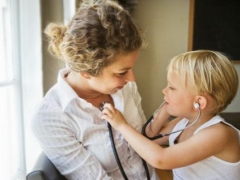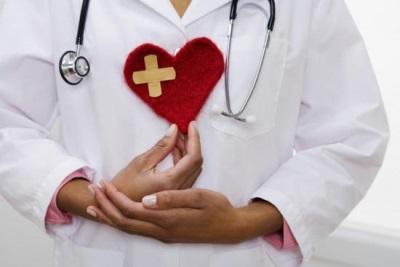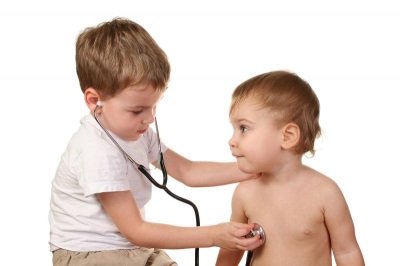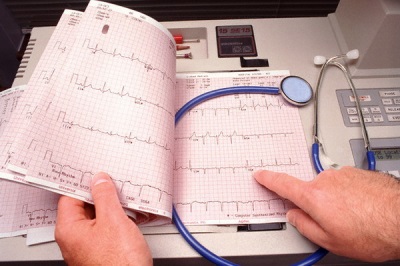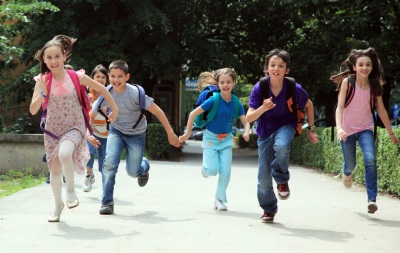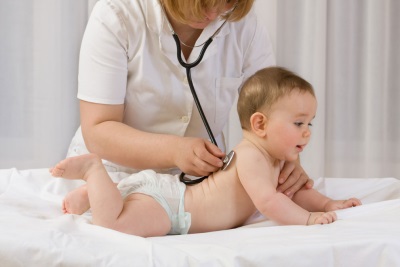Sinus arrhythmia in children
The normal functioning of the heart is very important for the health of the whole child’s body, therefore any dysfunction of this organ is perceived by parents with anxiety and anxiety. Quite a common problem in childhood is sinus arrhythmia. Is it dangerous for kids, why can it arise and how to act if such a disturbance of rhythm is revealed in the crumbs?
What is it
First of all, parents should be aware that the sinus is called the normal rhythm of the heartbeats, because it is formed by the sinus node, the second name of which is “pacemaker”, since it is he who sets the heart rate.
During normal operation of this node, the heart shrinks with a frequency characteristic of a certain age, and the intervals between heartbeats are the same. For example, for newborns, normal sinus rhythm will have a frequency of about 140 beats per minute, and for children 7 years old - about 100 beats per minute.
If a child has sinus arrhythmia, there is either a change in the intervals between contractions of the heart, or the frequency of contractions of the heart changes.
The reasons
Depending on factors provoking sinus arrhythmia, it is divided into respiratory and non-respiratory.
Respiratory
So called sinus arrhythmia associated with the process of breathing. When you inhale in children with such arrhythmia, the heart rate becomes higher, and as you exhale, the heart rate slows down.
The main reason for this type of arrhythmia is an immature nervous system, so such rhythm disturbances are often diagnosed in crumbs with intracranial hypertension, encephalopathy, rickets, prematurity, as well as during periods of active growth of children (6-7 years old and 9-10 years old). Gradually, the nervous system matures, and arrhythmia occurs in the child less and less. As a rule, this type of sinus arrhythmia does not carry health risks in and of itself.
Non-respiratory
It is noted in approximately 30% of children with sinus arrhythmia. Such a rhythm disturbance occurs in the form of seizures or is manifested by permanent arrhythmia.
The reason may be:
- Hereditary predisposition
- Infection with fever, dehydration and intoxication.
- Poisoning.
- Viral or bacterial myocarditis.
- Rheumatic disease.
- Cardiopsychoneurosis.
- Congenital heart disease.
- Tumor process in the heart.
- Diseases of the thyroid gland.
- Take some medication.
Forms
Sinus arrhythmias are divided into the following forms:
- Sinus tachycardia. With such an arrhythmia, the sinus node sets a larger number of contractions than should be normal in a child of a certain age. This problem is caused by intoxication, oxygen deficiency, thyrotoxicosis, psychological agitation, exercise, heart inflammation, and other causes.
- Sinus bradycardia. This form of arrhythmia is characterized by a reduced number of heartbeats per minute. It can provoke emotional arousal, poisoning, hypothyroidism, diseases of the nervous system, myocarditis, hypothermia, and other factors.
- Extrasystole. This form of arrhythmia is noted in every fifth child. In most cases, it does not affect the health of the baby, but there are dangerous types of beats, therefore, with such a violation, the child should be examined in detail.
In addition, depending on the severity of the rhythm disturbance, it is diagnosed:
- Moderate sinus arrhythmia. This is the option of arrhythmia in most cases observed in children. It is characterized by a weak manifestation or absence of clinical symptoms, and treatment in many cases is not required.
- Severe sinus arrhythmia in a child. It is more common in adults, often provoked by rheumatism and other serious heart damage. Such an arrhythmia worries the patient and requires treatment.
Symptoms
In many children, sinus arrhythmia does not cause any complaints, especially when it comes to its respiratory form. Some children feel that their heart beats faster, and the mother can notice an increase in heart rate by measuring the pulse in the child. Other complaints with non-dangerous sinus arrhythmias, as a rule, will not.
If the crumb complains that it is difficult for him to breathe, he is dizzy, he quickly gets tired, and there are nagging or stitching pains in his heart, one should consult a doctor, as these symptoms indicate more serious heart problems. It is important to immediately show the child to a cardiologist even if cyanosis of the skin, fainting, swelling or shortness of breath occurs.
Possible complications
If the sinus respiratory arrhythmia in children is practically not dangerous, since it does not disturb the blood flow in the children's heart, the non-respiratory forms can lead to complications such as fainting, chaotic contraction of the heart and ischemia of the brain tissue.
Over time, children with such disorders of heart rhythm begin to develop heart failure.
Diagnostics
Most often, sinus arrhythmia is detected on an electrocardiogram, measuring the distance between the R waves, which are the vertices of the ventricular complexes. You can also suspect a violation of the rhythm of heartbeats during the examination of the child and probing his large arteries (counting the heart rate).
To confirm the presence of arrhythmia and find out its cause, the baby is sent to:
- Holter monitoring. On the body of the crumbs fix a special apparatus that removes the ECG during the day.
- Echocardiography. Using ultrasound, the heart itself and large vessels are examined, which helps to identify defects and changes in the structure of the heart.
- Orthostatic test. Baby measures heart rate and blood pressure in the supine position, and then offer to get up and repeat the measurement. This test provides an opportunity to assess hemodynamics and cardiac activity.
What to do
If during a routine examination or an ECG after a child's complaints of pain or discomfort a sinus arrhythmia was detected in the heart, a cardiologist should be visited with the baby to examine it in more detail and determine the cause of such a rhythm disorder. If there are no other problems besides a change in the heartbeats of the child, the little one just needs to visit the doctor every 6 months and perform a control ECG.
An isolated arrhythmia that does not bother the child is not treated. If any cardiac diseases cause the change in the rhythm of the heart contractions, the doctor will select the necessary treatment for the baby. Depending on the cause, glycosides, vitamins, antiarrhythmic drugs, diuretic drugs, antibiotics and other medications can be used in the treatment of sinus arrhythmia. In case of serious heart defects, the baby may need surgical correction.
Arrhythmia and Sport
If a child is diagnosed with sinus arrhythmia, then for sports it is necessary to determine its shape. If this is a respiratory arrhythmia, there will be no contraindications to attending sports sections, but the child should be regularly shown to a cardiologist and taken on an ECG to prevent such a rhythm from becoming more severe.Non-respiratory arrhythmias are a reason to limit physical activity, depending on the cause of cardiac arrhythmias.
Prevention
To prevent rhythm disturbances in children, it is recommended:
- To adjust the optimal mode of the day with a full sleep.
- Balance the child's diet by including enough plant foods rich in magnesium and potassium. Fried and fatty foods, as well as sweets in the child’s menu should be limited.
- Do not overwork and excessive fatigue.
- Include in the life of the kid moderate exercise, such as exercise or swimming.
- Often walk.
- Avoid stress.
- Regularly visit the pediatrician even in the absence of complaints.
- Strengthen the immunity of the child.
In the following video, the doctor gives parents of children with arrhythmia useful tips that will help support the normal functioning of the heart of the child.
